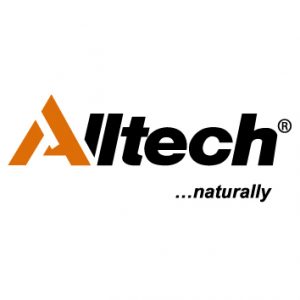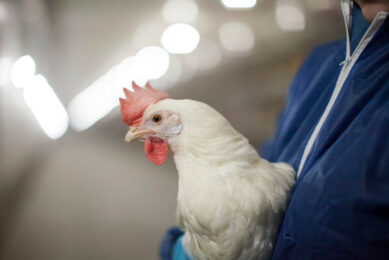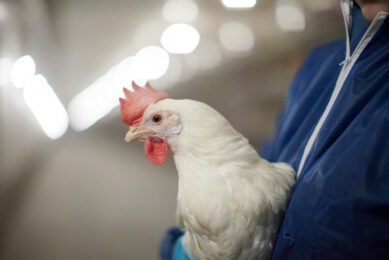A digestibility boost for complex diets
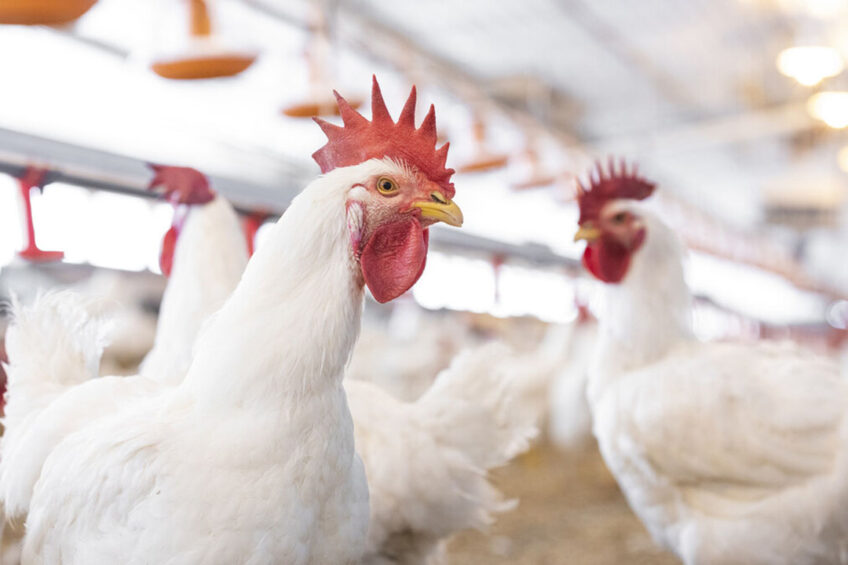
The use of exogenous enzymes in animal feed can improve the digestibility of nutrients, thus enhancing bird performance and feed efficiency. It ensures that animals get the right amount of the nutrients they need. This is more valuable than ever as raw material prices are high and formulators often switch to other types of feed ingredients.
The animal feed industry endured many challenges in 2021. While most producers have been resilient in the face of Covid-19, there has also been volatility, scarcity and increases in grain prices. These impacts related to grain have become a real challenge for profitability and performance. To meet the growing global demand for animal protein, producers must help animals achieve their genetic potential, and this begins with the feed. While many producers can feed conventional diets such as maize and soybean meal, albeit at a higher cost, many around the world have been forced to get creative with their diet composition due to high costs or commonly used grains not being available. Regardless of the diet composition, all producers must maximise diet efficiency. This often requires multi-dimensional strategies, beginning with gaining an understanding of supply availabilities and the nutrient compositions of the ingredients to overcome any nutritional challenges.
Understanding diet composition
Around 85-90% of feed consists of cereal grains (e.g., maize, wheat, barley) as an energy source and oilseeds (e.g. soy) as a protein source. Both cereal grains and oilseeds have a high dietary fibre content that contains non-starch polysaccharides (NSPs) and that forms part of the cell wall structure. The properties and different percentages of NSPs in plant cell walls are responsible for their anti-nutritive activities and can interfere with the animal’s digestive process.
The concentrations and types of these fibrous polysaccharides vary among grains and can negatively alter their nutritional values. The cell wall polysaccharides of cereals comprise arabinoxylans, cellulose, beta-glucans, mannans, galactans, xyloglucan and pectic polysaccharides, and the cell wall polysaccharides include stachyose and raffinose in oilseeds. These NSPs are subdivided into soluble and insoluble fractions. Soluble NSPs have a high affinity with water; they increase the viscosity of digesta and provide less contact between enzymes and substrates (physical barriers), thus reducing nutrient digestibility and absorption and providing more opportunities for bacteria, including Salmonella, among others, to proliferate. The insoluble fraction is hydrophobic and increases the rate of passage of the digesta through the gastrointestinal tract. This in turn leads to a shorter enzyme/substrate contact time and reduces nutrient absorption, resulting in decreased energy use.
The function of exogenous enzymes
It is widely accepted that dietary components can influence the colonisation or expression of disease. This is supported by research in the field, where scientists have often observed that dietary changes, especially in poultry nutrition, either increase or decrease the incidence of salmonellosis, colibacillosis and/or necrotic enteritis. Moreover, the diversity of the microbiome in each gut section reflects, in part, the types of nutrient substrates in those sections, and this is where exogenous enzymes come into play to help with those nutritional challenges.
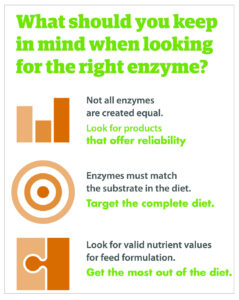 Enzymes are proteins that serve as catalysts, which naturally speed up the rate of a chemical reaction. Digestive enzymes naturally produced by the animal break down dietary ingredients into nutrients so that the intestine can absorb them. However, some animals – including poultry – cannot effectively digest 10-25% of the feed they take in, especially its fibrous components. These are known as anti-nutritional factors, as they interfere with the digestive process. These anti-nutritional factors can lead to issues such as decreased digestibility, increased feed passage, poor litter quality and shifts in the litter microbiota, harming the gastrointestinal tract’s integrity and resulting in lower performance parameters.
Enzymes are proteins that serve as catalysts, which naturally speed up the rate of a chemical reaction. Digestive enzymes naturally produced by the animal break down dietary ingredients into nutrients so that the intestine can absorb them. However, some animals – including poultry – cannot effectively digest 10-25% of the feed they take in, especially its fibrous components. These are known as anti-nutritional factors, as they interfere with the digestive process. These anti-nutritional factors can lead to issues such as decreased digestibility, increased feed passage, poor litter quality and shifts in the litter microbiota, harming the gastrointestinal tract’s integrity and resulting in lower performance parameters.
Furthermore, some natural enzymes depend on co-factors (minerals), co-enzymes (the active form of vitamins) and other organic molecules. If the bioavailability of these co-factors and co-enzymes is hindered due to dietary insufficiency or malabsorption issues, then the enzyme will not have this component and, as a result, will be unable to function. Feed enzymes can help break down those anti-nutritional factors by working to increase the nutrient availability of starches, proteins and minerals, such as phosphorus and calcium, to help the bird reach its full growth potential. The most important function of exogenous enzymes in the gastrointestinal tract of poultry is the disruption of cell walls, as this process liberates the enclosed nutrients, making them more accessible to the animal’s endogenous enzymes and increasing nutrient availability.
Digestibility boost for plant protein
Improved feed digestibility achieved by feed enzymes reduces the residence time of nutrients in the gastrointestinal tract and allows for fewer opportunities for the growth and proliferation of pathogenic bacteria, such as Salmonella, E. coli and Clostridium spp. When considering alternative feed ingredients, exogenous enzymes can add flexibility to the diet by increasing the range of ingredients used in feed formulations, reducing variability in the nutritive value and helping producers get the most out of feed. Diet composition, NSP diversity and variability will determine which is the right enzyme solution for each producer to use.
Choosing a complex of enzymes that gets the most out of the whole diet to ensure a wider range of action while improving its nutritional value is highly recommended. The use of solid-state fermentation (SSF) for commercial enzyme production has been extensively researched over the past 20 years. SSF systems can be tailored to address the specific needs of each individual operation based on the microbial selection and multiple substrates in the diets. One feed enzyme that has been shown to enhance the digestibility of protein-rich vegetable feed ingredients is Allzyme Vegpro (hereafter referred to as the ‘feed enzyme’).
Studies with this feed enzyme in soybean meal-based diets show that the true metabolisable energy improved by 5-9%, and the true digestibility of all of the most limiting amino acids for broiler chicken, such as methionine, lysine, cystine and others, also improved. This feed enzyme allows the protein in vegetable plant sources, such as soybean meal, to become available to endogenous and exogenous enzymes in the small intestine instead of being blocked by the cell wall and, as a result, becoming unable to be utilised, giving the birds access to essential nutrients. This reduces the flow downstream of undigested feed into the intestinal microbiota in the hindgut, thus supporting nitrogen cycling and nutrient transport.
Conclusion
The exogenous enzymes in animal feed can improve the digestibility of nutrients and, in turn, benefit the gut immune response by decreasing the likelihood that bacteria will be able to develop and lead to further problems, such as salmonellosis, colibacillosis and/or necrotic enteritis. The increased absorption provided by exogenous enzymes helps poultry by boosting their ability to ingest the necessary nutrients and enhancing bird performance and feed efficiency while also reducing their environmental impact due to the reduced output of nutrients in excreta and the better use of limited resources.


